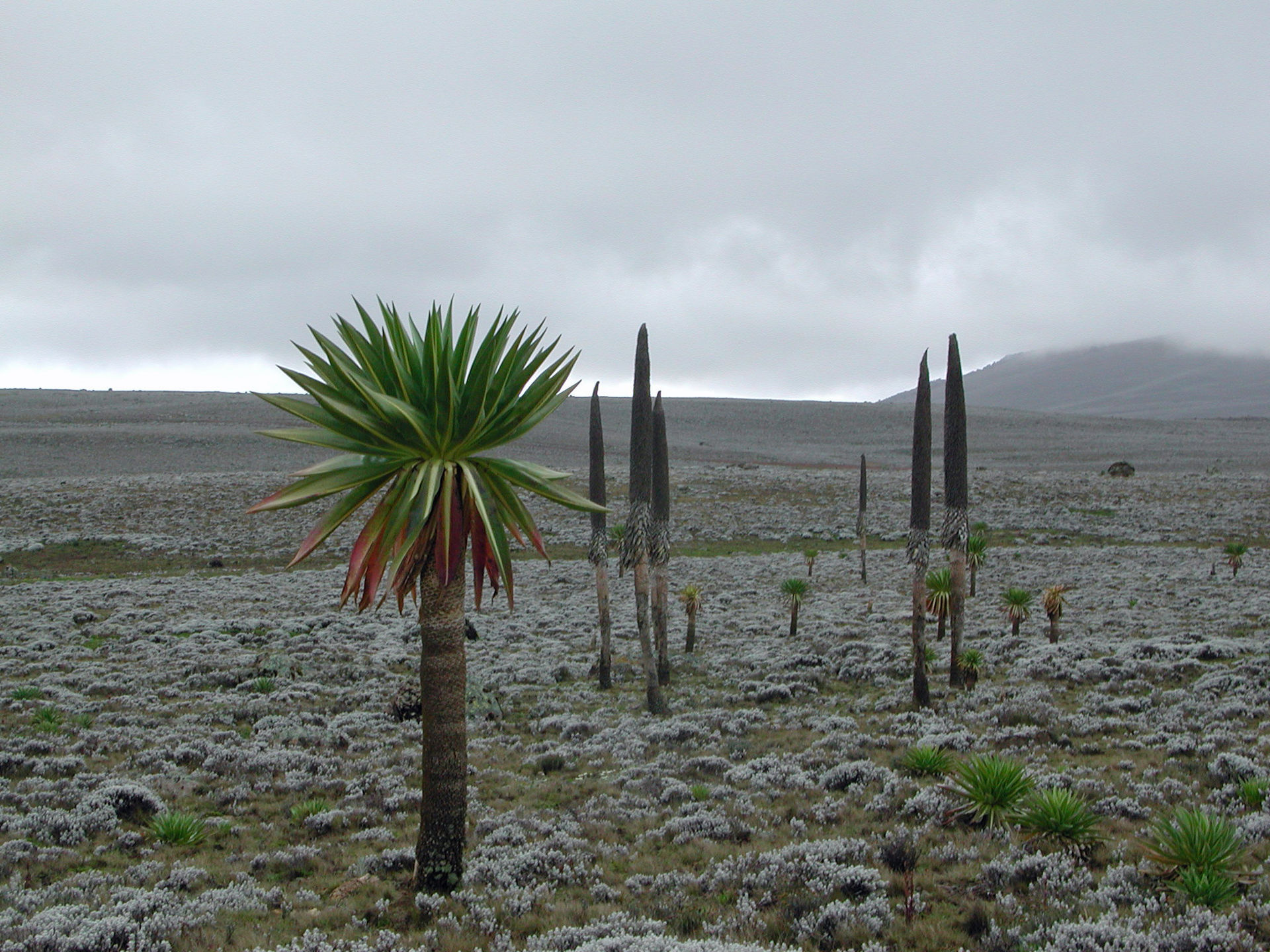
Bale Mountains National Park - Overview
Location and Significance
Bale Mountains National Park is situated in the Oromia region, southeast of Ethiopia. Spanning approximately 2,200 square kilometers, the Bale Mountains represent Ethiopia's second highest mountain range. Notably, the park’s rich diversity in geography and wildlife has earned it a spot on UNESCO's World Heritage Tentative List. The landscape here is striking, featuring glacial lakes, swamps, volcanic ridges, and peaks, all home to unique species such as the gelada baboon, the Walia ibex, and the critically endangered Ethiopian wolf.
Hydrology and Water Resources
The park is a crucial water catchment area, with 40 rivers originating within its boundaries. These rivers feed into five significant rivers: the Web, Wabe Shebele, Welmel, Dumal, and Ganale. In addition to this, the Bale Mountains are the source of numerous springs that are vital for water supply in the lowlands throughout the year. Two rivers, the Wabe Shebele and Yadot (a tributary of the Ganale), are harnessed for hydroelectric power, with dams supplying electricity to Delo-Mena and the broader Bale area.
Mineral Springs
Numerous natural mineral water springs, known locally as "horas," are found within the park. These springs are essential for livestock, providing minerals like sodium, potassium, magnesium, zinc, and calcium.
Distinct Habitats within Bale Mountains
Northern Grasslands
Habitats range from grasslands at about 3,000 meters to Mount Tullu Demtu, Ethiopia's second-highest peak at 4,377 meters above sea level.
Northern Woodlands
Dominated by East African pencil juniper (Juniperus procera) and St. John’s wort, the Northern Grasslands and Woodlands teem with wildflowers and grasses.
Afro-alpine Meadows
The largest continuous Afro-alpine area on the African continent, the Sanetti Plateau is covered in lichen-covered rocks and dotted with Giant lobelia, which can grow up to 12 meters tall.
Erica Moorlands
The Plateau features alpine lakes and streams, crucial for resident wildlife and rare, regionally endemic bird species.
Harenna Forest
Covering about half of the park, the Harenna Forest is a mystical woodland draped in moss and lichens, often shrouded in fog, making wildlife sightings rare.
Wildlife Diversity
Bale Mountains National Park is home to five mammals endemic to the park and 20 others endemic to the Ethiopian Highlands. Key species include the endangered Ethiopian wolf, Mountain Nyala, Big-headed mole-rat, and the Menelik’s bushbuck. The Afro-alpine area is especially vital, hosting over half of the global Ethiopian wolf population. The northern woodlands are a sanctuary for the largest population of Mountain Nyala, comprising about two-thirds of the global count. Other notable mammals include the Bohor reedbuck, klipspringer, grey duiker, warthog, African golden wolf, spotted hyena, serval cat, colobus monkey, lion, leopard, and African wild dog.
Avian Life
Featuring sixteen endemic bird species, the park attracts birdwatchers with the likes of Abyssinian catbird, Abyssinian Longclaw, Yellow-fronted parrot, spot-breasted plover, Black-headed siskin, and Golden-backed woodpecker. Wattled cranes frequently breed on the high plateau during the wet season.
Flora
The vegetation varies greatly with altitude. The northern area around Dinsho features grass riverine plains bordered by sagebrush and St. John's wort. Vibrant wildflowers like lobelia, Geraniums, 'red-hot pokers', and Alchemitta paint the landscape. Higher altitudes see the appearance of heather, either as small bushes or mature trees. The Sanetti Plateau’s flora includes resilient Afro-alpine plants. The park houses around 1,600 species of vascular plants, with 177 species endemic to Ethiopia's Bale floristic region, including 31 species found nowhere else. The forests are also significant for preserving genetic stocks of wild forest coffee (Coffee Arabica) and various medicinal plants.
Accommodation Options
Bale Mountain Lodge
A luxurious eco-lodge located deep in the Harenna Forest. It offers top-tier comfort, excellent food, and exceptional views amidst wildlife.
Wabe Shebelle Hotel
Situated in Goba outside the park, this no-frills hotel is the primary budget-friendly option, albeit with mixed reviews regarding value for money.
Harenna Forest Hotel and Cultural Lodge
Located in Rira village, this very basic lodge serves as a lunch stop during tours. It’s suitable for those comfortable with minimal amenities.
Getting There
The only current means to reach Bale Mountains National Park is by road, preferably using a private vehicle. A 4x4 is necessary, particularly during the wet season.
